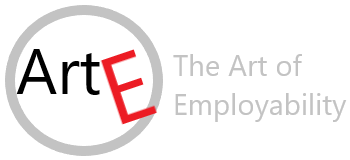16/02/2021
Participants use theatre of objects to play female and child characters.
Art promotes intercultural dialogue
One of the main challenges that have emerged during the theatre work process are cultural barriers. ‘Story of a staircase”, by Antonio Buero Vallejo, is a classical, renowned piece of Spanish theatre, this meaning that cultural and religious traditions of the 1920-1930 period are central to the narrative.
Born and raised in a wide variety of countries where Muslim traditions and practices are deeply rooted, participants have raised several debates around representing some of the scenes, particularly regarding the second act, which begins with a catholic burial. Some of them found no difficulty in performing it as a fiction exercise; others felt it uncomfortable to participate in such an exercise.
Given the situation, and with the aim to respect and value participants’ identity and beliefs, the proposal of some of the youngsters was finally followed: playing the liturgy scene according to their own traditions and including a song that is shared by all of them.
Another challenging decision was related to acting female characters. There is only one girl in the group, and most of her 15 male peers felt uncomfortable to play feminine roles in front of an audience. The group and the accompanying professionals therefore decided to use theatre of objects to represent femininity: participants will give voice to self-built, huge puppets and characters were finally distributed according to this code.
The best way to find a communication between religions is to make art together.
Beáta Nagy, International Projects Director, Projektfabrik.
El arte promueve el diálogo intercultural
Uno de los principales retos que han surgido a lo largo del proceso de trabajo teatral son las barreras culturales. “Historia de una escalera”, de Antonio Buero Vallejo, es una obra clásica y reconocida de teatro español, por lo cuál las tradiciones culturales y religiosas del periodo entre 1920-1930 tienen un peso importante en la pieza.
Nacidos y criados en una gran variedad de países donde las tradiciones y prácticas musulmanas tienen un fuerte arraigo, los participantes han abierto varios debates a la hora de representar algunas escenas, en especial las del segundo acto, que empieza con un entierro católico. Algunos no vieron dificultad en representarla en un ejercicio de ficción, pero otros se sintieron muy incómodos al participar en el ejercicio.
Dada la situación, y con ánimo de respetar y poner en valor la identidad y las creencias de los participantes, se siguió la propuesta de algunos de los jóvenes: representar la escena litúrgica siguiendo sus propias tradiciones e incluyendo una canción compartida por todos ellos.
Otra decisión crítica estuvo relacionada con la interpretación de personajes femeninos. Sólo hay una chica en el grupo y la mayoría de sus 15 compañeros se sentía incómodo al interpretar personajes femeninos en público. El grupo y los profesionales que lo acompañan decidieron finalmente utilizar el teatro de los objetos para representar la feminidad. Los participantes darán voz a grandes marionetas autoconstruidas y los personajes se repartieron de acuerdo con este código.
La mejor forma de establecer comunicación entre religiones es hacer arte juntos.
Beáta Nagy, Directora de proyectos internacionales en Projektfabrik.
More on the local project partners:
Espai Teatre
Fundació Comtal
UpSocial

Luisa Baldeschi
Posted at 16:53h, 18 FebruarVery interesting and challenging experience. Can’t wait to see how you solved it.